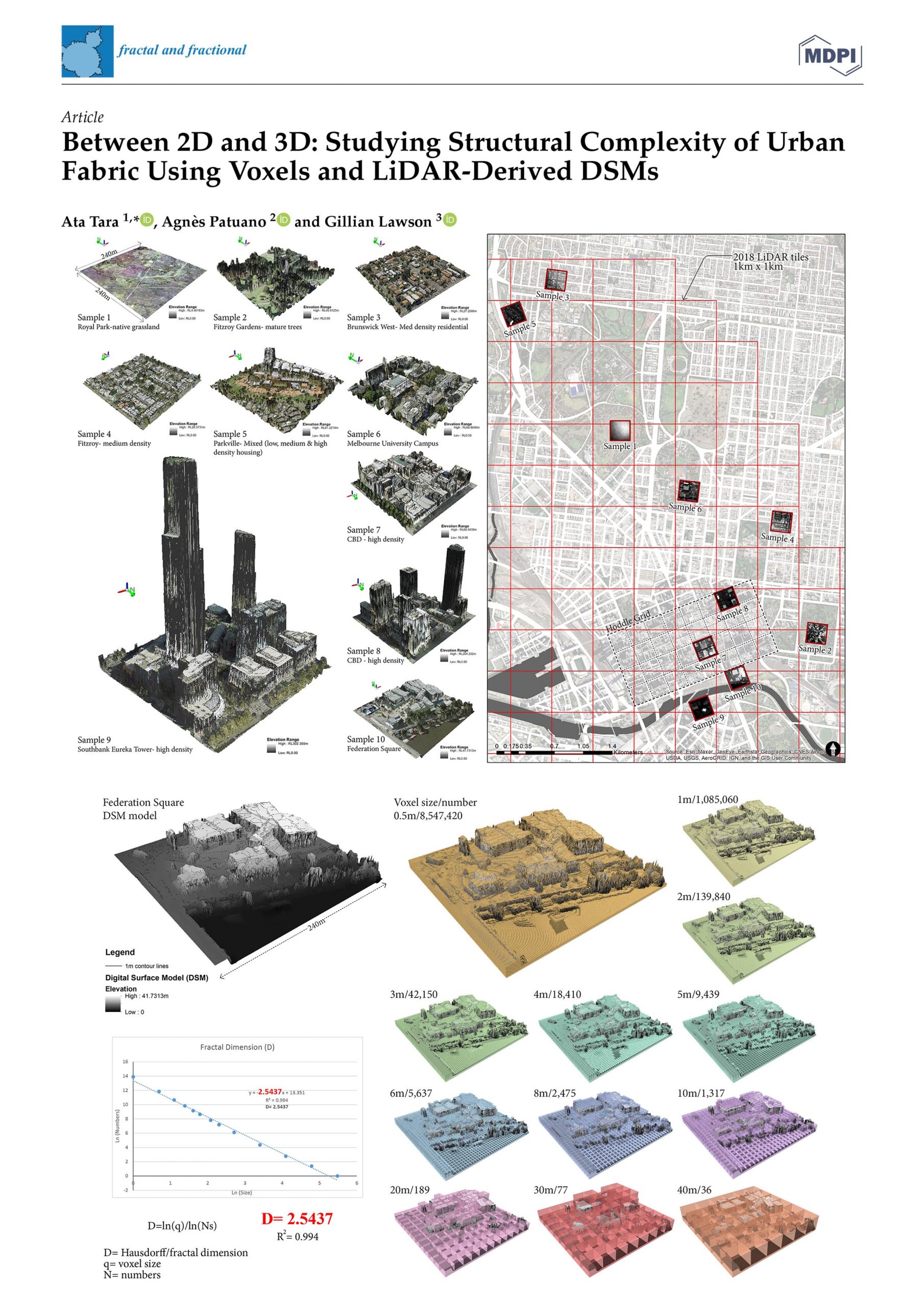20
NovemberStructural Complexity of Urban Fabric
Cities are complex systems and their physical forms are the manifestation of cultural, social and economic processes shaped by the geometry of natural and man-made elements. Digital Surface Models (DSM) using LiDAR provide an efficient volumetric transformation of urban fabric including all built and natural elements which allows the study of urban complexity through the lens of fractal dimension (D). Founded on the “box-counting” method, we reveal a voxelization technique developed in GIS (Geographic Information System) to estimate D values of ten DSM samples across central Melbourne. Estimated D values of surface models (between 2 and 3) provide a measure to interpret the structural complexity of different urban characters defined by the pattern of developments and densities. The correlations between D values with other DSM properties such as elevation, volume, solar radiation and surface roughness, showed a strong relationship between DSM volume and mean elevation. Lower strength correlations were recorded with solar radiation and surface roughness. The proposed method provides opportunities for fractal research to study pressing issues in complex urban environments such as declining physical fitness, mental health and urban biodiversity.
Direct Link to the publication
Link to the special issue “Fractals in the Built Environment: Applications of Fractal Theory to Design and Building”

gralion torile
May 31, 2022 at 5:47 amTerrific work! This is the type of information that should be shared around the web. Shame on the search engines for not positioning this post higher! Come on over and visit my website . Thanks =)